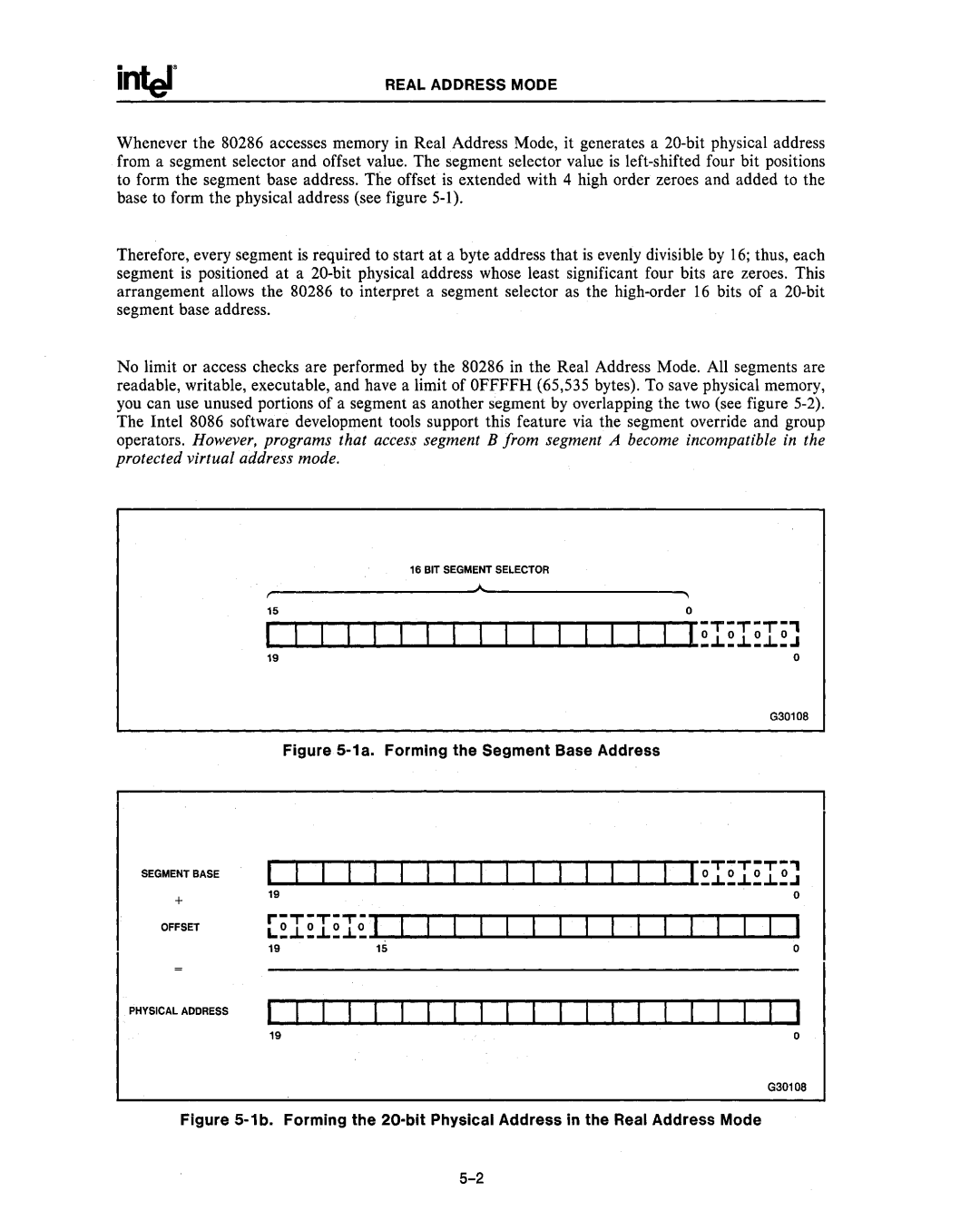
REAL ADDRESS MODE
Whenever the 80286 accesses memory in Real Address Mode, it generates a
Therefore, every segment is required to start at a byte address that is evenly divisible by 16; thus, each segment is positioned at a
No limit or access checks are performed by the 80286 in the Real Address Mode. All segments are readable, writable, executable, and have a limit of OFFFFH (65,535 bytes). To save physical memory, you can use unused portions of a segment as another segment by overlapping the two (see figure
16 BIT SEGMENT SELECTOR
__________________ | __________________ |
15 | o |
G30108
Figure 5-1a. Forming the Segment Base Address
SEGMENT BASE
+
OFFSET
19 | 15 | o |
PHYSICAL ADDRESS
19 | o |
G30108
